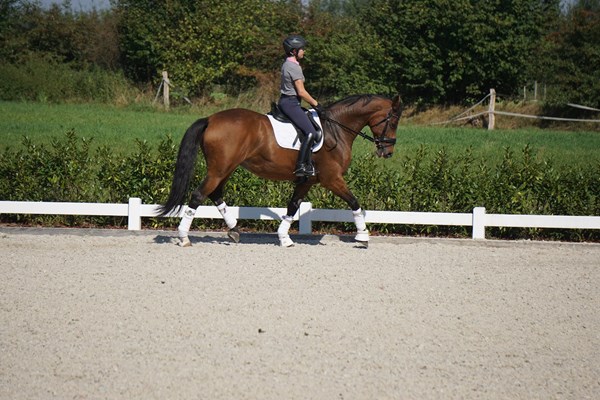Do you remember your first introduction to dressage? I clearly remember mine. It was in the eighties, when I was a young working student at a farm in West Orange, New Jersey. There was a dressage trainer there named Roy Como. I remember watching Roy and his one student/assistant, Jennifer. It was the first time I had seen the sport in person. Of course, I didn’t know if what I was watching was correct or not, but it looked beautiful and I remember thinking, I’d like to try that someday.

I’m willing to bet that there are many young riders who have witnessed dressage for the first time and wanted to know how they, too, could ride like that. Fortunately, there are many avenues for young people who show an affinity for the sport. In “Opportunity Knocks for Young Riders” (p. 44), we offer a list of educational options for kids of all levels and budgets. Included in this list is information on the age range, approximate costs involved and application process. And while not every child will have the chance to train with an upper-level rider, there are plenty of local farms that offer dressage lessons, too. A good place to look for a qualified instructor is on the USDF website (usdf.org).
From opportunities for youth riders, we transition to Eliza Sydnor Romm’s story about how to progress more efficiently. Eliza suggests adopting a beginner’s mind, which means you temporarily set aside all opinions, beliefs, previous experiences, etc. and open yourself up to the exercise/lesson your instructor is trying to teach. She says, “Beginner’s mind doesn’t ask you to believe in anything in particular, just that you set aside old beliefs for a short period of time while you are in a learning environment. This is often why instructors say they love teaching kids. Kids usually have very few preconceived opinions and beliefs coming into a lesson and they are much more open to saying “I don’t know.” But as adults, do we really know that much more? We have many more experiences than a child, but those may or may not help us to be better riders.” You can read “Learning Strategies for the Dressage Rider” on p. 30.
Also in this issue we look back on special moments from the 2016 Olympic Games in Rio (p. 36). You’ll notice our cover is a departure from the typical images we use. We felt the saying “a picture is worth a thousand words” couldn’t be any more true than in this photo of Great Britain’s individual gold-medalist Charlotte Dujardin. Her ride on Valegro was the highlight of an incredible career for this pair, as the gelding is due to be retired in the near future. You can also read about the U.S. dressage team’s bronze-medal win—the first in 12 years.
Until next time,











